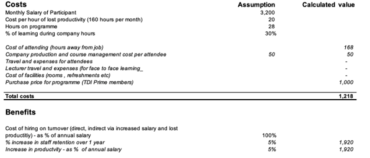Looking back to see the future of insurance
A novel business model to provide insurance
Back in the 19th century coffee shops of London, ship and cargo owners would look for underwriters to insure their assets. The value chain was fairly short in those days, even with the development of the 12 man marine insurance syndicate by Frederick Marten at Lloyd’s.
However, in the 2nd half of the century the growth in sea travel across the Atlantic and around the world to Australia made suitable and affordable cover harder to come by. Insurance compensation limits and open-ended liabilities were making marine insurance prohibitively expensive.
In response, like-minded and wealthy shipowners got together and formed clubs so that they could collectively support and provide cover for each other. These co-operatives are still in existence today and known as P&I Clubs (P&I meaning protection and indemnity).
Advantages of not-for-profit cooperatives as providers of cover
There were/are a number of distinct advantages to this co-operative model for ship and cargo owners. Namely, that the not-for-profit P&I Club worked directly for the shipowners, thereby eliminating underwriters’ profit, minimising the value chain and reducing the cost of insurance.
The key distinction to understand is that The P&I Club is not an insurer and therefore not subject to the same regulatory and capital requirements as a carrier. Members pay a “call” instead of a premium to the P&I Club.
From the outset, this novel business model meant that Shipowners could pool expertise, industry knowledge and best practice to improve the safety of ships and their payloads, as well as pooling financial resources. Their focus was on loss avoidance as much as it was on a financial safety net for the ship owning members.
A 19th century Lloyd’s business model for the digital age
Regular readers of this column will know that I have often engaged with the early start InsurTech start-up. Recently, I got to see a new business venture that replicates this early Lloyd’s model for the digital age. Most of the time, the pitches I am sent don’t get past 1st base with me, but this one caught my eye. Not just because it was launched by an old acquaintance of mine from London, but because it addresses a shortcoming in the market, it is scalable and it has first to market advantage.
So, I picked up the phone and spoke with Gareth Eggle, one of the co-founders of InShare.
Inshare Smart Risk
He went on, “Our ambition at InShare is to make financial indemnity the afterthought. Through the risk sharing club approach, the main aim of our communities of like-minded commercial enterprises is loss prevention through working collectively together.”
Prevention is better than cure
The first thing that struck me from talking with Gareth as I we discussed the InShare proposition is that this is all about moving away from the safety-net approach of insurance. Instead of insurance being all about financial indemnity when businesses fall, InShare want to do more to prevent businesses from falling in the first place.
Of course, there will be liabilities and exposures and perils outside the control of the platform and the community. For that, Inshare will lay off those risks to the wholesale market, reinsurers or specialist carriers. So, there will still be “traditional” insurance at the back end. But for the majority of coverage, the risk sharing community will look after its own.
And prevention is always better than cure. Which is why the InShare value chain is centered around a digital ecosystem within each risk sharing community. This ecosystem comprises third party tech partners and service providers to bring in value added services, skills and resources for improve risk prevention.
The Value Chain is centred around Risk Sharing Communities
I asked Gareth to explain the concept of risk sharing communities to me, “The way the digital platform works is to create a risk sharing community, called an RSC, for a specific collection of commercial enterprises. The businesses within each RSC have some affinity with each other, typically because they are all in the same industry, such as publicans or electricians.
“This means that they all understand the risks they commonly share within the RSC better than anyone. They also know how to mitigate and protect against those risks better than anyone, certainly better than an insurer.
It also means that they are pooling their resources and insurance coverages. Publicans are a good example to explain how the Inshare model works (a world that Gareth knows well). It seems that the loss ratio on insuring publicans is very low. In the 15 years that Gareth’s parents ran pubs, they paid their premiums and never made a claim.
“They paid all that premium and got nothing back”, Gareth told me, “Not only did they never make a claim, they received no advice, guidance or help on loss prevention or how they could mitigate any risks they faced.”
The optimised InShare value chain
The Inshare business model is centred around multiple risk sharing communities, each one established as a not-for-profit company. They are limited liability businesses whose sole purpose is to pay claims. This model immediately introduces efficiency into the value chain as it reduces the cost of overheads, there are no shareholders to satisfy and the discretionary cover is exempt from IPT (insurance premium tax). The risk sharing community is not a risk baring entity, it’s (simply) a membership club.
Gareth explained further, “Because the risk sharing community is more cost efficient and because the members are actually working cooperatively to prevent a loss, the model is inherently more efficient and optimised that a traditional insurance value chain.
“And because each risk sharing community is a closed club, each member gets to decide annually what to do with any surplus at the end of each financial year. Do they all take a rebate, or reduce the cost of future calls, or invest the surplus in investments in mitigation projects?”
Insurance in another name
When you boil it down, Inshare are effectively creating a group captive. But instead of being from the inside out, it’s from the outside in. Creating and sharing value and efficiencies within the risk sharing community, a community deductible at much higher levels, all enabled by the digital platform from Inshare.
Neat. And to nail it further, Gareth gave me another example of how Inshare benefits its members. Take farmers and their barns.
Gareth explained how it goes. “Farmers already form these cooperatives of sharing communities for workforce, machinery, customers etc. They work to a common purpose which is that everyone succeeds. But when it comes to insurance, the way the market works with the specialist providers is that each individual farmer buys their own cover. However, with InShare, groups of farmers can pool together and create a risk sharing community. They can set their own contributions, levels of cover, rules of membership. Because of the efficiencies and reduced overheads of our value chain, more of the farmers’ pooled financial resources are held for claims. Which means that at the end of each year, the surplus is returned to the members one way or another.”
Redefining the insurance Value Chain
Regular readers of this column have seen this many times before. I show it again in this article because Inshare is yet another example of how the value chain is going to change through the increased use and capabilities of technology.
If you take the future model of insurance shown as 3 circles on the right hand side, then Inshare is the digital platform. Behind it sits risk capital, most likely from the wholesale or reinsurance market. At the front end, you could replace digital brands with risk sharing communities, or with Inshare itself as a market facing brand.
Either way, the path is clear and a further example of the optimisation of the value chain through innovative thinking enabled by digital technology.
Related articles on optimising the value chain
Leaving the pack behind; InsurTech digital platforms
Is the insurance organisation ready to burn the boats?
Redefining insurance for the gig economy
Personalisation of insurance; the end or a new beginning?
The author, Rick Huckstep, is the Chairman of The Digital Insurer. Rick has been advising, investing and commentating on InsurTech start-ups since 2015.



























































